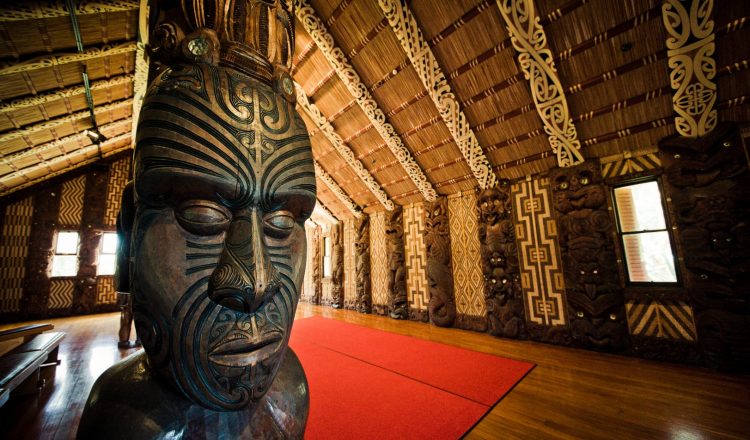뉴질랜드 영어
뉴질랜드 영어 또는 키위 영어(이따 언급할 뉴질랜드 사투리)는 뉴질랜드의 세 가지 공식 언어 중 가장 널리 사용되는 언어입니다. 나머지 두 가지는 마오리어와 뉴질랜드 수화입니다. 다채로운 문화로 만들어진 이 나라의 모습처럼 뉴질랜드 연설에서도 전 세계의 영향을 받은 용광로(melting pot)의 모습을 찾아볼 수 있습니다.
뉴질랜드 영어의 주요 구성 요소는 영국 영어에서 비롯되었으며 스코틀랜드어(특히 남부 아일랜드어), 아일랜드어, 호주어, 심지어 미국 영어로부터도 영향을 받았습니다. 하지만 북유럽과 마오리 문화가 집단적으로 국가 정체성으로 융합되기 시작하면서 일부 마오리어를 차용하기 시작했습니다.
차용어
마오리어 또는 테 레오 마오리(Te Reo Maori)는 뉴질랜드에서 자생하는 풍부한 동식물을 지칭하는 데 널리 사용됩니다. 국가 상징인 작고 날지 못하는 새 키위(Kiwi)가 대표적인 예입니다. 키위새는 뉴질랜드인 또는 뉴질랜드를 뜻하는 속어 “키위”의 유래이기도 합니다. 마오리어는 그 어느 때보다 자주 사용되고 있습니다. 단순히 영어를 대체하기 위해서가 아니라 끊임없이 발전하는 뉴질랜드의 다양화를 꾀하기 위해서입니다.
또달리 주목할 만한 마오리 차용어로 카이(kai, 음식), 이위(iwi, 부족), 화나우(whanau, 가족), 와카(waka, 카누/보트)가 있습니다. 가장 많이 사용되는 영어를 두고 마오리어와 같은 부수적 언어에서 단어를 차용하는 경우는 거의 없지만, 놀랍게도 뉴질랜드에서는 실제로 일어나고 있으며 심지어 마오리어에서만 차용해오는 것도 아닙니다. 궁호(Gungho, 매우 열심히인)와 같은 용어는 케첩(Ketchup)과 같은 다른 단어들과 함께 중국 정착민들로부터 유래했습니다. 작다는 뜻의 스코틀랜드어 “wee”라는 단어는 주로 사우스랜드주에서 사용됩니다.
키위 속어
사촌격인 호주 영어와 마찬가지로 Kiwi English는 타국인들로 하여금 아주 혼란스럽게 하며, 이러한 은어들은 매혹적으로 다가오기도 합니다. 특히 영국 영어 사용자들은 키위 억양과 결합된 심한 은어들을 듣게 되면 머리를 긁적이게 될 겁니다.
다양하게 활용되는 은어로 쿠어(chur)를 꼽아보겠습니다. 이 단어는 “감사합니다”를 의미하는 건배(cheers)와 혼합된 경우지만 동의, 감사, 인사 및 작별 인사를하는 데도 쓰입니다. 합성어의 다른 예로써 샌달(flip-flops)은 뉴질랜드에서 잔달(jandals)로 통하는데, 이는 신발의 한 종류를 지칭하기 위해 ‘일본(Japan)’과 ‘샌들(sandals)’을 결합한 것입니다.
‘Sweet as’, ‘Mint’, ‘Preemo’는 모두 ‘좋아’ 또는 ‘문제 없어’라는 뜻으로 쓰이며, 무엇을 더 강조하고 싶다면 ‘as’라는 단어를 추가하면 됩니다. (예: Fast as)
뉴질랜드에는 교통편이 좋지 않은 도서지역과 험준한 곳이 많습니다. 키위 사람들은 이를 두고 “외딴 곳”이라는 의미의 “wop wops”라고 합니다. 이 말의 기원을 추측하기는 비교적 어렵습니다. 다만 아주 오래전부터 마오리 또는 호주 원주민의 언어로 지명을 지칭하는 것이 얼마나 어려운지에 대한 하나의 예일 수 있습니다. 어쨌든 이는 아주 재밌는 표현입니다!
‘She’ll be right’을 해석하면 ‘그녀가 맞다/옳다’라는 말일테지만 뉴질랜드에서는 그저 ‘문제 없어’ 또는 ‘괜찮다’는 뜻이며, 여기에서 ‘She(여성)’는 아무런 뜻도 가지지 않습니다.
대다수 키위 사람들의 느긋한 성격 특성 상 서로를 부를 때 ‘Cuz’, ‘Mate’또는 ‘Blo’라고 지칭히지만 보통은 친한 사이에서 통용됩니다. 친절한 키위 사람들은 ‘No’라고 거절하기 힘들어 합니다. 따라서 좀 더 애매하게 ‘Yeah Nah’라고 하면 ‘아니오’의 의미이고 ‘Nah Yeah’는 ‘예’라는 의미입니다. 조금 낯설게 들릴지도 모르겠지만 키위만의 아주 독특한 표현이예요.

















































